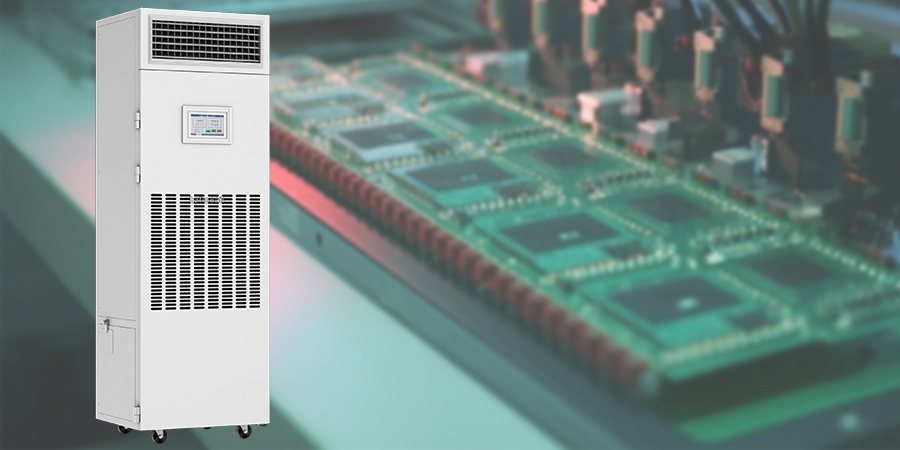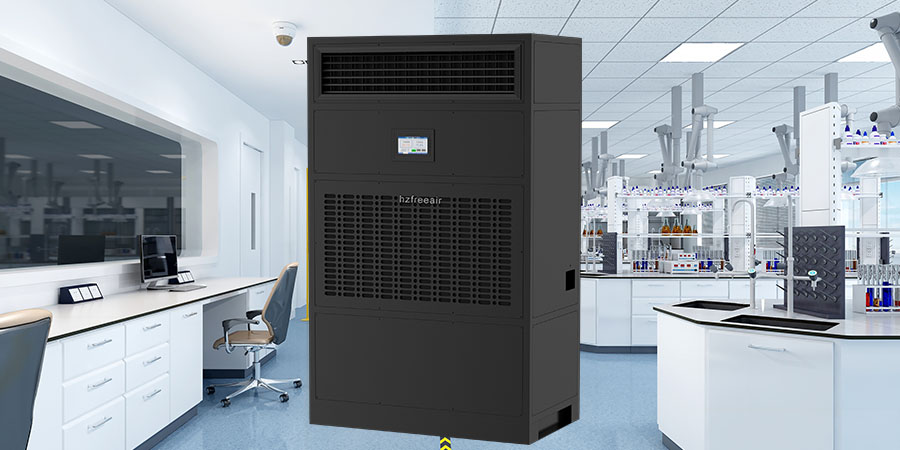


In modern industrial production, environmental humidity control has become a crucial factor for ensuring product quality,
enhancing process stability, and prolonging equipment lifespan. The industrial humidification and dehumidification integrated
machine, as an integrated humidity regulation device, integrates dehumidification and humidification functions into a single system,
providing more efficient and precise humidity control solutions for industries such as pharmaceuticals, electronics manufacturing,
data centers, and food processing. This article will comprehensively analyze the technical principles, performance characteristics,
application scenarios, and selection guidelines of such devices, and demonstrate their industrial application value through practical cases.
The typical technical parameters of modern industrial dehumidification and humidification integrated machines are as follows:
Humidity adjustment range: 10%-90%RH (high-end models can reach 5%-95%RH)
Control accuracy: ±1.5%RH (high-precision models can reach ±0.5%RH)
Processing air volume: 500 - 50,000 m³/h (selectable according to space volume)
Dehumidification/humidification capacity: 5 - 200 kg/h (configured according to requirements)
Energy efficiency ratio: Dehumidification COP ≥ 3.0, Humidification energy efficiency ≥ 0.8 kg/(kW·h)
Core technical features and performance advantages
The technical advancement of the industrial dehumidification and humidification integrated machine is mainly reflected in its integrated
design, precise control capabilities, and energy efficiency optimization. These features give the integrated machine significant overall advantages
compared to split systems.
The intelligent humidity identification and switching system is the core technological innovation of the integrated machine.
By adopting multi-sensor data fusion technology, the equipment can monitor the trend of environmental humidity changes in real time and predict
the humidity regulation requirements in advance. The advanced mode switching algorithm can complete the function conversion from dehumidification
to humidification within 30 seconds, with a response speed that is over 60% higher than that of traditional split systems. A certain model of the equipment
is equipped with a self-learning control system that can record the humidity change patterns of the environment and automatically optimize the adjustment
strategy, controlling the humidity fluctuation range within ±1%RH.
Energy efficiency optimization design runs through all systems of the integrated machine.
The variable-frequency compressor automatically adjusts the speed according to the load demand, and its energy efficiency can increase by 40% during
partial load conditions; the EC fan is 30% more energy-efficient than the AC fan, and the noise is reduced by 5 dB(A); the intelligent defrosting technology
monitors the frosting condition of the evaporator and only initiates the defrosting program when necessary, avoiding energy waste. The data from an industrial
site test shows that the annual operating energy consumption of the integrated machine is approximately 18% lower than that of the separate system, and the
investment recovery period is shortened to 2.3 years.
Typical Application Scenarios and Case Analysis
The industrial dehumidification and humidification integrated machine, with its highly integrated functions and precise control capabilities, has demonstrated
unique value in multiple industrial fields that are sensitive to humidity. Different industries have proposed differentiated technical requirements for humidity
control based on their production process characteristics, which has also driven the continuous innovation and professional specialization of the integrated
machine technology.
Lithium battery production is a typical scenario that showcases the value of the integrated machine technology.
In the electrode coating process, excessive humidity can cause solvents to evaporate slowly, affecting production efficiency, while insufficient humidity may
lead to electrode cracking. A case study from an energy storage battery factory shows that after adopting an integrated solution combining rotary wheel
dehumidification and ultrasonic humidification, the humidity in the production environment was controlled within the precise range of 35 ± 2% RH, reducing
the defect rate of the electrode from 3.2% to 0.8%, and reducing energy consumption by 22% compared to the original split system. The equipment is equipped
with a special explosion-proof design, with a lithium ion adsorption rate of < 0.1 ppm, meeting the special safety requirements of battery production.
Precision electronic manufacturing has nearly stringent requirements for humidity control.
In the semiconductor packaging process, excessive humidity can cause solder joints to oxidize, while insufficient humidity can lead to electrostatic damage to
components. A high-precision integrated machine system introduced by a microelectronics enterprise maintains the humidity in the workshop within the golden
range of 45 ± 1.5% RH through a ± 0.3% RH control accuracy. The equipment is equipped with a three-level air filtration system (G4 + F8 + H13), with particle
counting reaching the ISO 14644-1 Class 5 standard, and is also equipped with an electrostatic elimination device, with the electrostatic voltage controlled within
± 50V. System operation data shows that the product yield increased by 1.2 percentage points, and the annual efficiency increase was approximately 2.8 million yuan.

Key Points for Equipment Selection and Usage Suggestions
Selecting the appropriate industrial dehumidification and humidification integrated machine requires comprehensive consideration of various factors.
Correct selection not only meets production process requirements but also optimizes energy efficiency and reduces overall ownership costs. The following
are professional selection guidance and usage suggestions.
Key parameters for selection should focus on:
Space characteristic assessment: Precisely calculate the volume of the space (length × width × height), consider the air change rate requirements
(generally 8-15 times/h), and determine the required air volume (m³/h). For spaces with partitions or special airflow organization, an additional 20%-30%
air volume margin should be considered. A case study of an electronic factory shows that accurate space modeling helped select the appropriate air volume
equipment, avoiding excessive investment.
Humidity control requirements: Clearly define the humidity range and control accuracy required by the process. Lithium battery production typically requires
30±2% RH, while pharmaceutical packaging may require 45±5% RH. For every 1%RH increase in accuracy requirements, the equipment cost is approximately
15%-20% higher.
Special environment adaptation: For high-temperature environments (>35℃), select high-temperature type compressors; for corrosive environments, require
a stainless steel shell; for explosion-proof areas, need ATEX-certified equipment.
Selection focus in different industries:
Electronic industry: Prioritize control accuracy (±1% RH) and cleanliness (ISO Class 5)
Pharmaceutical industry: Focus on material compliance (FDA certification) and validation support (IQ/OQ/PQ)
Food industry: Pay attention to hygiene design (no dead corners structure) and anti-corrosion performance
Storage industry: Emphasize dehumidification capacity (above 50kg/h) and wide-area uniformity
Through scientific selection and reasonable application, the industrial dehumidification and humidification integrated machine can provide an economically efficient
humidity control solution for various industrial environments. It ensures product quality while achieving energy conservation and operational optimization.
